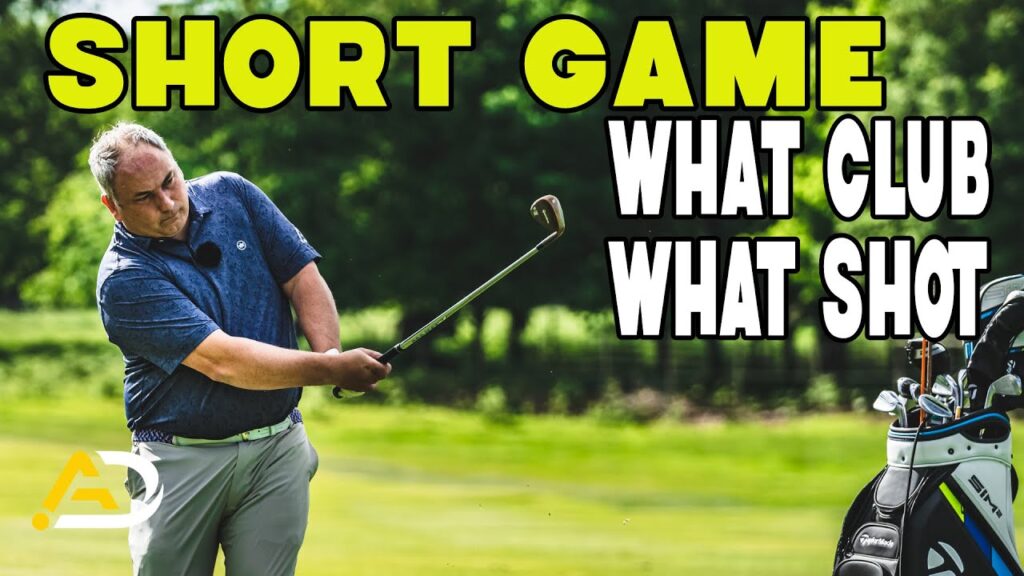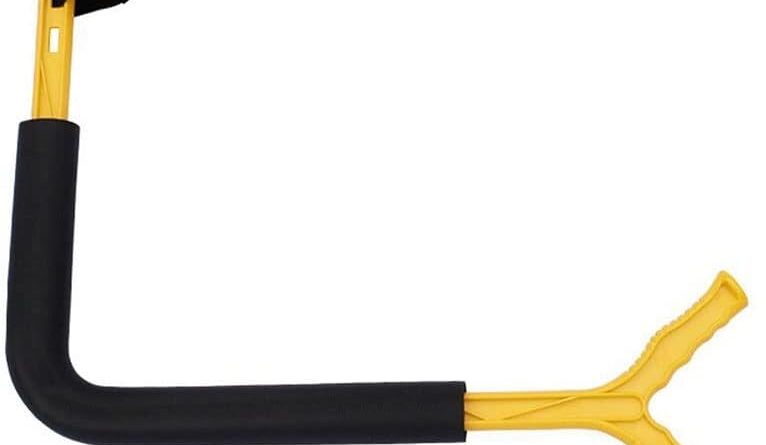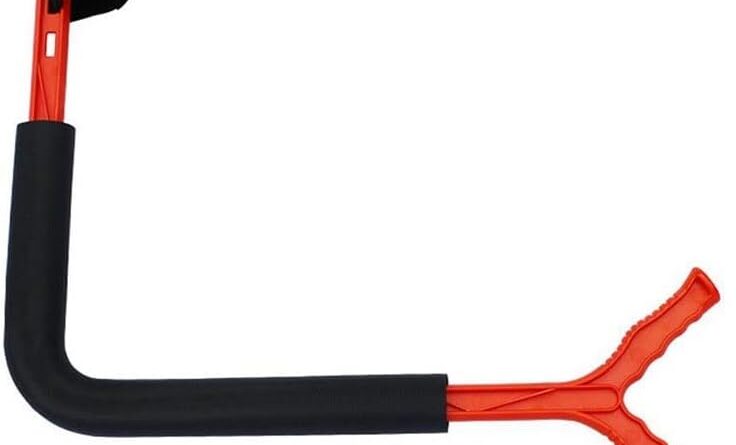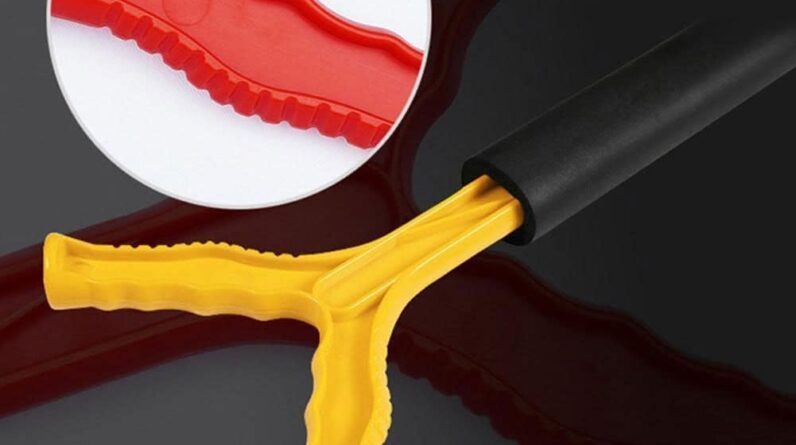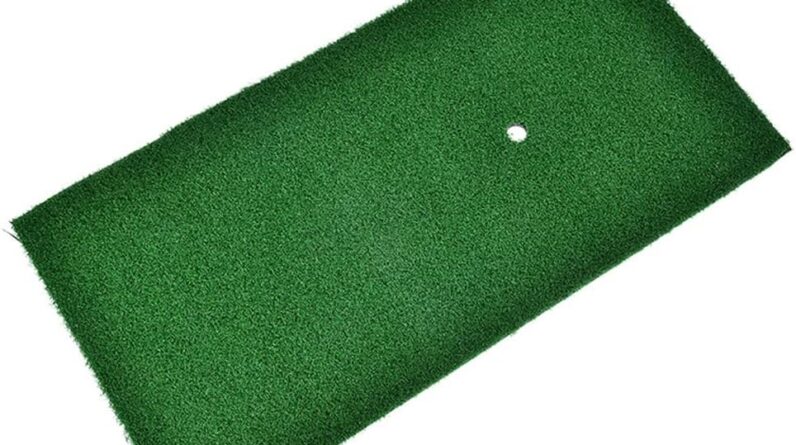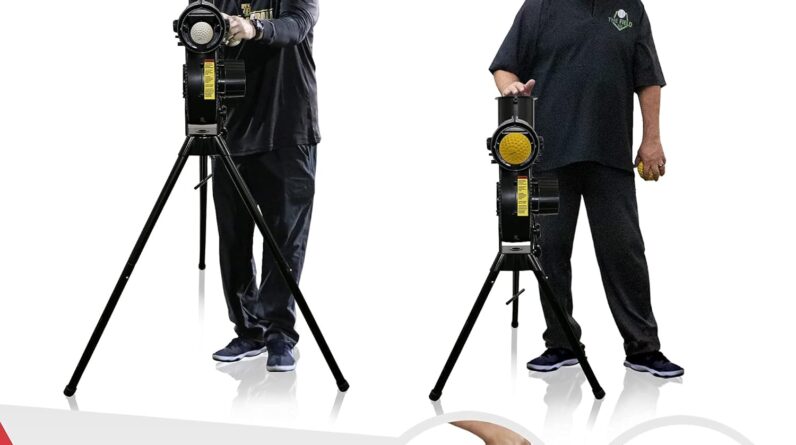When standing on the golf course, faced with a myriad of possibilities and unsure which club to choose, the task may seem daunting. However, fear not! In this article, you will discover helpful tips and strategies that will guide you through the process of selecting the perfect golf club for any shot. From considering the distance and terrain to understanding the characteristics of each club, you will gain the knowledge and confidence needed to make informed decisions on the golf course. So, let’s dive right in and unlock the secrets to choosing the right golf club for every shot!
Factors to Consider for Choosing the Right Golf Club
Distance to the Target
When choosing the right golf club for a shot, one of the most important factors to consider is the distance to the target. Different clubs are designed to hit the ball different distances, so it’s crucial to choose a club that will allow you to reach your desired target. If you’re trying to hit the ball a long distance, you’ll want to select a club with a lower number, such as a driver or a fairway wood. On the other hand, if you’re looking for more control and accuracy on shorter shots, you may opt for a higher numbered club, such as an iron or a wedge.
Type of Shot
Another factor to consider when selecting a golf club is the type of shot you want to hit. Different clubs are designed to help you achieve different shot shapes and trajectories. If you want to hit a straight shot, you may choose a club that is more forgiving and has a larger “sweet spot.” Conversely, if you’re looking to shape your shot, you may opt for a club with a smaller sweet spot that allows for more control over the ball flight.
Wind Conditions
Wind conditions can greatly affect the flight of your golf ball and should be taken into account when selecting a golf club. If you’re facing a strong headwind, you’ll need to choose a club that allows you to get the ball up in the air and help it fight against the wind. Conversely, if you have a tailwind, you may opt for a club that allows for a lower ball flight to help maximize distance. Additionally, crosswinds can make it challenging to control the direction of your shot, so selecting a club that helps minimize the effects of the wind is crucial.
Lie of the Ball
The lie of the ball refers to the position and condition of the ball on the course. Different lies require different club selections to ensure a successful shot. If your ball is sitting on the fairway, you’ll have a clean lie and can choose a club that offers more distance and control. However, if your ball is sitting in the rough or a bunker, you’ll need a club that allows for a steeper angle of attack and more loft to make solid contact with the ball.
Course Conditions
Course conditions, such as the firmness of the greens, the slope of the fairway, and the presence of hazards, can also impact your club selection. If the greens are firm, you may need to select a club with less loft to allow the ball to roll out more when it lands. On the other hand, if the greens are soft, you may opt for a club with more loft to help the ball stop quickly upon landing. Similarly, the slope of the fairway can affect the distance and direction of your shot, so selecting a club that considers the slope is important. Lastly, hazards such as water or sand bunkers may require you to choose a club that allows for more accuracy and control to avoid these obstacles.
Understanding Different Types of Golf Clubs
Woods
Woods are typically used for long-distance shots off the tee. They have a larger clubhead and longer shaft, which provides more distance and power. Woods are numbered, with the driver being the lowest number (usually 1) and the higher numbers representing fairway woods. These clubs are designed to help you achieve maximum distance, but they can be challenging to control for precise shots.
Irons
Irons are versatile clubs that can be used for a variety of shots. They are numbered from 1 to 9, with lower numbers offering more distance and lower ball flight. Irons have smaller clubheads and shorter shafts compared to woods, providing more control and accuracy. They are commonly used for approach shots, chipping, and pitching around the greens.
Wedges
Wedges are specialized irons with higher lofts, allowing for increased trajectory and spin. The most common wedges include the pitching wedge, gap wedge, sand wedge, and lob wedge. These clubs are crucial for shots that require precision and control around the greens or when navigating various hazards. They are designed to help you achieve shorter distances with increased spin.
Hybrids
Hybrids are a cross between woods and irons, combining the forgiveness and distance of a wood with the accuracy and control of an iron. They feature a larger clubhead and a shorter shaft than woods, making them easier to hit for many golfers. Hybrids are an excellent choice for shots where you need distance and accuracy, such as long approach shots or shots from the rough.
Putters
Putters are used on the greens to help you roll the ball into the hole. They have a flat clubhead with a low loft and are designed for accuracy and control rather than distance. Putters come in various styles, including blade putters, mallet putters, and counterbalanced putters. The type of putter you choose may depend on your personal preference, the stroke style, and the feel you prefer.
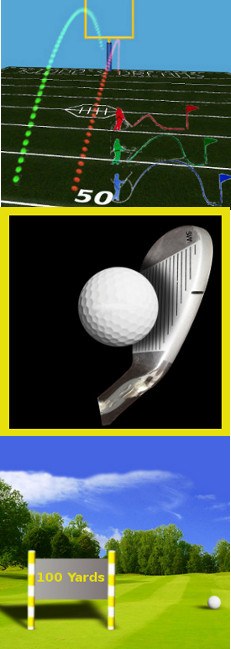
Choosing the Right Golf Club for Different Distances
Off the Tee
When teeing off, your primary objective is usually to maximize distance while maintaining accuracy. The driver, or 1-wood, is the most common choice for tee shots due to its long shaft and low loft, which allows for maximum distance. However, for golfers who struggle with accuracy off the tee, a fairway wood or hybrid may be a better choice. These clubs offer more forgiveness and control while still providing adequate distance.
Approach Shots
Approach shots refer to the shots taken from the fairway or rough with the goal of reaching the green. The specific club selection for approach shots depends on the distance to the target. Typically, mid to long irons (4-7) are used for longer approach shots, while shorter irons (8-9) or wedges are used for shorter distances. It’s important to consider the course conditions, wind, and any hazards when selecting the appropriate club for your approach shot.
Chipping
Chipping is a short shot played from near the green, where you want the ball to fly a short distance and roll out toward the hole. For most chip shots, golfers often use a wedge (such as a pitching wedge or sand wedge) to achieve the desired trajectory and spin. The specific wedge selection depends on factors like the distance to the hole, obstacle height, and whether there’s rough or fringe to negotiate.
Pitching
Pitching refers to shots played from farther away from the green, where you want the ball to have a higher trajectory and stop relatively quickly on the green. For pitching, higher lofted wedges like sand wedges or lob wedges are commonly used. These wedges provide the necessary loft to achieve a high trajectory and generate spin, allowing the ball to stop quickly upon landing.
How to Evaluate the Lie of the Ball for Club Selection
Fairway Lie
When evaluating the lie of the ball on the fairway, you’ll want to consider factors such as the grass length, any divots or uneven lies, and the firmness of the ground. If the fairway lie is clean with short grass and no obstacles, you can choose a club that provides distance and control. However, if the ground is firm or you’re facing an awkward lie, you may need to adjust your club selection. In these situations, using a club with more loft can help you make solid contact with the ball and maintain control.
Rough Lie
When your ball is in the rough, your club selection should primarily focus on how you can get the ball out of the thicker grass and onto the fairway or green. The rough can affect the distance and trajectory of your shot, so it’s important to choose a club that can help you overcome the grass’s resistance. For longer shots, consider using a club with more loft to help launch the ball higher and reduce the chances of getting caught in the rough. On shorter shots, utilizing a wedge can provide the necessary loft and control to escape the rough successfully.
Bunker Lie
When your ball ends up in a sand bunker, club selection becomes critical to execute a successful shot. Depending on the distance and the lip of the bunker, you may need to choose a club that provides loft and helps you clear the lip with an adequate distance. Sand wedges are typically the go-to club for bunker shots, as their wider sole and higher loft allow for maximum forgiveness and higher ball flight. Experiment with your swing and club selection to find the best option that ensures your ball escapes the bunker and lands safely on the desired target.
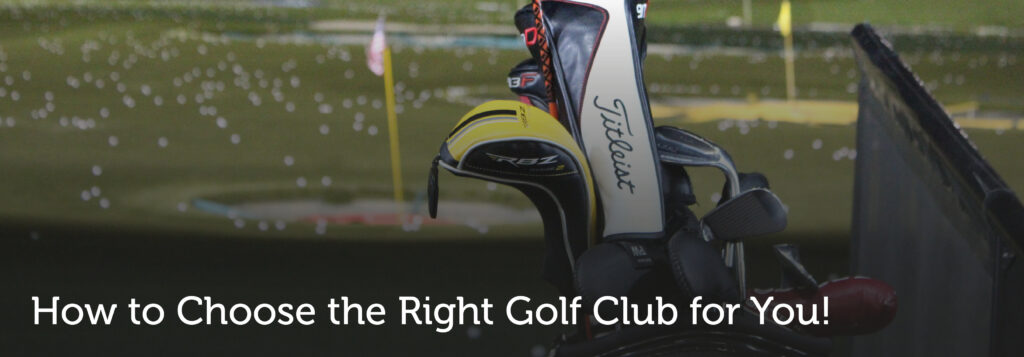
Adjusting for Wind Conditions
Headwind
Playing in a headwind requires careful club selection to counteract the wind’s resistance and maintain distance. Choosing a club with more loft can help create a higher ball flight, allowing it to better fight against the headwind. By increasing the club’s loft, you can generate more backspin, which helps the ball stay airborne for a longer period. Additionally, focusing on a smoother swing and solid contact can help offset the impact of the headwind on your shot.
Tailwind
When facing a tailwind, your objective is to maximize distance while still maintaining control. To achieve this, selecting a club with less loft can help keep the ball lower and maximize roll after the landing. By choosing a lower lofted club, you reduce the chances of the wind lifting the ball too high and losing control over its trajectory. However, it’s essential to adjust your swing and contact as the reduced loft may increase the chances of the ball flying lower than desired.
Crosswind
Playing in a crosswind can pose challenges in terms of controlling the ball’s direction. In this situation, it’s crucial to choose a club that helps minimize the impact of the wind. Higher lofted clubs can be beneficial, as they create backspin and allow you to hold your shot against the crosswind. Adjusting your aim and swing to compensate for the wind’s direction can also improve accuracy. If the wind is strong and affects the direction significantly, sometimes using the wind to your advantage by aiming slightly against the crosswind and allowing it to bring the ball back toward your target can be a strategic choice.
Considering the Course Conditions
Firm vs Soft Greens
The firmness of the greens can significantly affect your shot selection and landing strategy. On firm greens, the ball tends to roll out more after landing, reducing the need for higher lofted clubs. In this case, selecting a lower lofted club can help you control the distance and allow the ball to bounce and roll closer to the hole. Conversely, on soft greens, the ball tends to stop quickly upon landing. Thus, choosing a club with more loft can help you generate the necessary height and spin to stop the ball closer to the hole.
Slope of the Fairway
The slope of the fairway can influence the direction and behavior of your shot. When selecting a club, take into account the uphill or downhill slope and adjust your aim and club selection accordingly. On an uphill slope, choosing a club with slightly more loft can help counteract the slope’s effect and achieve the desired distance. Conversely, on a downhill slope, you may consider using a club with less loft to reduce the trajectory and increase the chances of a controlled landing.
Hazards
Course hazards, such as water bodies or bunkers, can significantly impact your shot strategy and club selection. When facing these obstacles, it’s important to choose a club that maximizes accuracy and allows you to clear the hazard successfully. In some cases, it may be more strategic to lay up or play short of the hazard with a higher lofted club to ensure you have a clear shot for your next approach. Understanding the distance to the hazard and your comfort level with each club can help you make an informed decision and avoid unnecessary penalties.
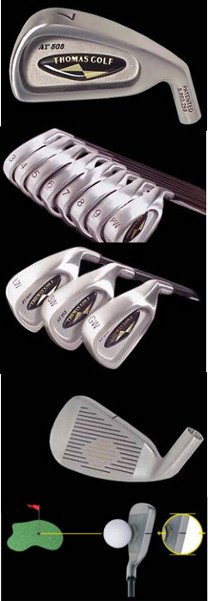
Factors to Analyze for Type of Shot
Draw vs Fade
Being able to shape your shots can be advantageous, especially when trying to navigate around obstacles or position the ball strategically. A draw refers to a shot that curves from right to left for a right-handed golfer (left to right for a left-handed golfer). Whereas, a fade is a shot that curves from left to right for a right-handed golfer (right to left for a left-handed golfer). When trying to execute a draw, choosing a club with a more closed clubface or adjusting your grip can help promote a right-to-left curve. Similarly, to hit a fade, selecting a club with an open clubface or adjusting your grip can promote a left-to-right curve.
High vs Low Trajectory
Different situations on the golf course may require you to vary the trajectory of your shots. When aiming for a higher trajectory, selecting a club with more loft can help you achieve the desired ball flight. Conversely, to achieve a lower trajectory, choosing a club with less loft and making slight adjustments to the setup and swing can help keep the ball flight lower and more penetrating, useful in windy conditions or when trying to minimize the impact of tree branches.
Backspin vs Roll
Backspin and roll are essential elements to consider based on the shot type and desired outcome. Backspin allows the ball to stop quickly upon landing, especially on soft greens, making it easier to control distance. Clubs with more loft, such as wedges, allow for higher spin rates. Conversely, generating more roll is essential when seeking more distance or when playing on firm fairways. Clubs with less loft and a lower spin rate, such as woods, can provide the desired roll after the ball lands. Understanding the spin characteristics of different clubs and how it affects the flight and landing can help optimize your shot selection.
Choosing the Right Club Length and Shaft Flex
Club Length
The length of a golf club can significantly impact your swing and overall performance. Getting fitted for the appropriate club length is crucial for maximizing your potential on the course. A club that is too short can lead to missed shots and a restricted swing, while a club that is too long can result in inconsistency and loss of control. It’s best to consult with a professional club fitter who can assess your swing characteristics and recommend the appropriate club length for your height, arm length, and swing style.
Shaft Flex
The flex of the golf club’s shaft refers to its ability to bend during the swing. The flex rating can range from extra stiff to ladies or senior flex, with various options in between. The flex of the shaft primarily depends on your swing speed and tempo. A stiffer shaft is recommended for golfers with faster swings, as it provides more control and helps prevent excessive bending. Conversely, golfers with slower swing speeds may benefit from a more flexible shaft to help generate more power and distance. Professional club fitters can help assess your swing characteristics and recommend the appropriate shaft flex for your game.

Understanding Loft Angle and Club Selection
Loft Angle
The loft angle of a club refers to the angle between the clubface and the vertical plane. Loft angle greatly influences the trajectory and distance of your shots. Clubs with higher loft angles, such as wedges, produce a higher and shorter shot trajectory, ideal for shots around the green that require precision and stopping power. Conversely, clubs with lower loft angles, like drivers, produce a lower and longer shot trajectory, maximizing distance off the tee.
Club Selection for Different Loft Angles
To effectively choose the right club based on loft angle, it’s essential to consider the specific shot you’re playing. For longer shots off the tee or from the fairway, drivers and fairway woods with lower loft angles are suitable choices. For mid to long-range approach shots, irons with a range of loft angles can provide the necessary distance and accuracy. Around the greens or when navigating hazards, higher lofted wedges become effective tools for stopping the ball quickly and controlling the distance. By understanding the varying loft angles of different clubs, you can make informed choices that cater to your specific shot requirements.
Factors to Consider for Putter Selection
Putter Types
Putter types can vary significantly, each offering unique characteristics that can influence your stroke and overall performance on the greens. Traditional blade putters provide a classic look and feel, with a smaller and more compact clubhead. Mallet putters, on the other hand, often have more weight distributed around the perimeter of the clubhead. This design can increase stability and forgiveness, particularly on off-center strikes. Counterbalanced putters feature additional weight in the grip, creating a counterbalance effect that enhances stability and control. The type of putter you choose ultimately depends on your personal preference, stroke style, and feel on the greens.
Putter Length
Putter length is an important factor to consider in achieving optimal posture, alignment, and stroke mechanics. The ideal putter length can vary depending on factors such as your height, stance, and putting style. A putter that is too long or too short can negatively impact your stance, leading to inconsistent strikes and accuracy. Generally, taller individuals may benefit from longer putters to ensure comfortable posture and proper alignment, while shorter individuals may prefer shorter putters for better control and stability. Experimenting with different putter lengths and consulting with a professional can help you find the ideal putter length for your game.
Putter Weight
Putter weight greatly affects the feel and control of your stroke. Lightweight putters can provide more feel and sensitivity, making them suitable for players who prefer a lighter touch on the greens. Heavier putters, on the other hand, can offer increased stability and resistance to twisting, providing a more controlled stroke for those who prefer a firmer feel. When choosing a putter weight, it’s crucial to consider factors such as personal preference, green speed, and stroke style. Testing various putter weights and seeking guidance from a professional can help you find the optimal weight that aligns with your game.
